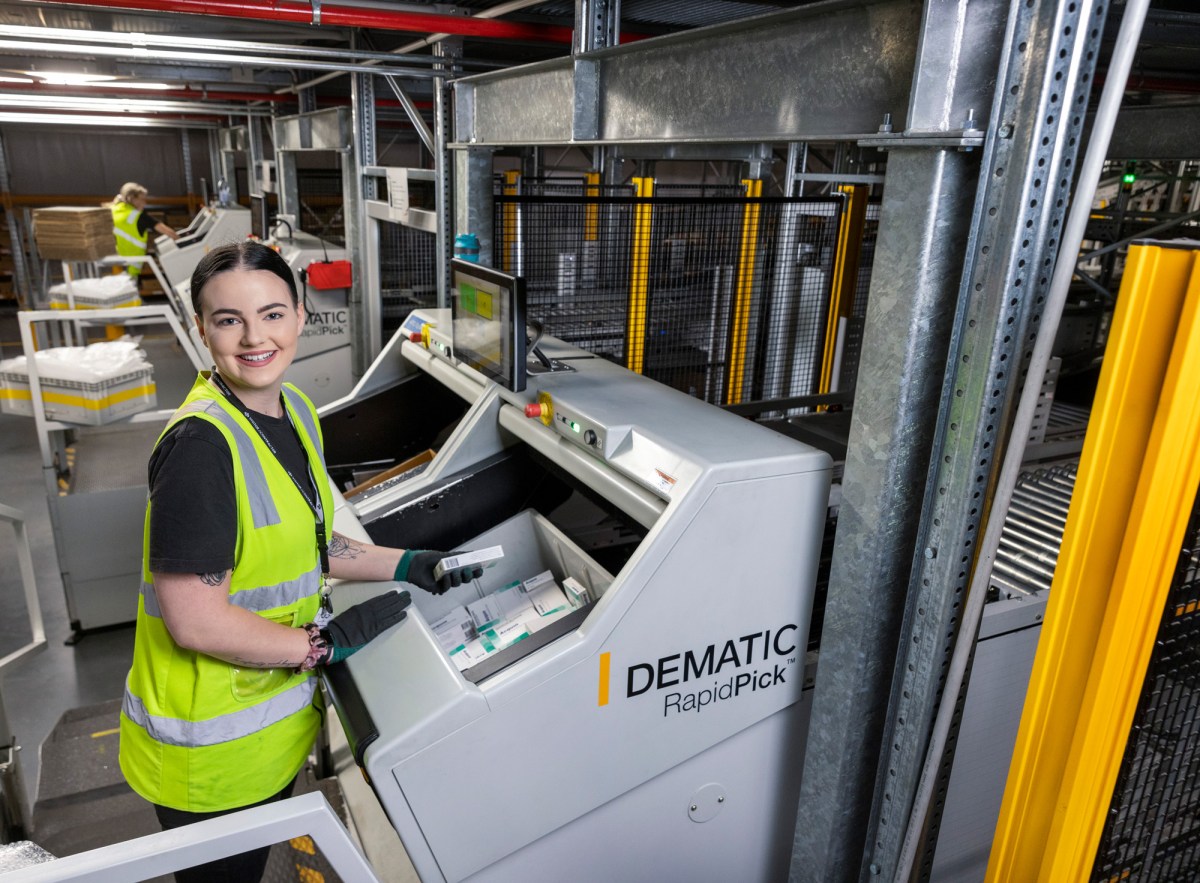Australian pharmaceutical wholesaler, Sigma Healthcare has automated operations at its new Perth and Brisbane distribution centres with the Dematic Goods-to-Person (GTP) Picking Solution.
Sigma selected the fully automated Dematic solution as the central system to improve operational efficiencies at its two DCs, due to previous supply chain challenges from legacy systems at other DCs.
Warehouse and logistics have been an area of significant focus for Sigma over the past three years, according to Sigma national operations manager for logistics, Paul Brown.
“With the pharmaceutical market as competitive as it is in Australia, it was clear that we needed to optimise these two new DCs to accommodate current and future demands on our supply chain,” he said.
The system is an automated picking and buffering sequence solution, meaning orders are picked, buffered, and then sequenced to delivery vehicles in the specific order required. For Sigma, this process works to optimise the entire picking and delivery process by organising orders accurately and efficiently, and at a faster rate than manual operations.
“By optimising these new DCs through automation, it was clear that this kind of technology was a natural step forward for Sigma as a business. Pharmacies are constantly pushing Sigma as their sole distributor for increased service levels, which were just not achievable at previous operation rate,” Brown continued.
“By initiating a more innovative approach to picking operations, we can make the most of our two new DCs with advanced automation technologies ensuring the highest efficiency.”
The Dematic solution is uniquely attuned to the pharmaceutical conditions of Sigma’s DCs, with the system able to operate in a temperature-controlled environment, which is required for select pharmaceutical products that must be stored between 2°and 8°C.
Dematic regional solutions development director for Asia Pacific, Darren Rawlinson said an essential part of the solution’s design was for it to be able to cater for Sigma’s distinctive storage requirements.
“For example, there are some products that require refrigeration and others that need to be stored in a vault or highly secured environment – with both having a lot of regulations around them. By understanding the requirements of the products within the DCs, our solution cohesively combines its automation capabilities with the existing infrastructure of the DCs, which effectively boosts overall productivity without the risk of product damage,” he said.

